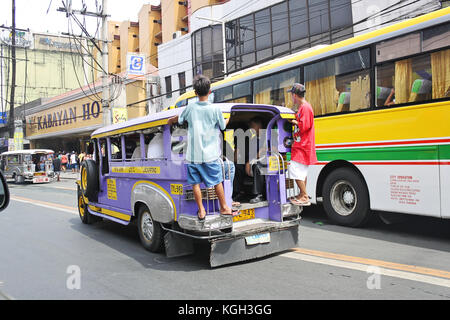Take Full Advantage Of Direct Exposure with Transit Advertising Philippines
Take Full Advantage Of Direct Exposure with Transit Advertising Philippines
Blog Article
A Detailed Exam of the Approaches and Techniques for Successful Transit Advertising Campaigns
Transportation marketing campaign provide an one-of-a-kind chance for brand names to involve with diverse audiences in vibrant atmospheres. To attain success, it is crucial to understand the subtleties of target demographics, carry out innovative style techniques, and choose optimum positioning places. In addition, the performance of these projects can be considerably improved by carefully monitoring performance metrics and adapting techniques accordingly. As we check out these vital parts, it comes to be clear that the path to an impactful transit advertising strategy is both fulfilling and complex, increasing the question of how ideal to browse these complexities for maximum brand name visibility.
Comprehending Target Demographics
Recognizing target demographics is important for the success of transit ad campaign (Transit Advertising Philippines). Identifying details target market sectors allows marketers to customize their messages effectively, making certain that the material reverberates with the intended audiences. This strategy enhances interaction and makes the most of roi
To efficiently examine target demographics, online marketers need to consider several essential variables, including age, earnings lifestyle, occupation, and level preferences. For instance, a campaign targeted at young experts might concentrate on comfort and modernity, while one targeting family members could stress safety and reliability. Moreover, geographic aspects such as country versus metropolitan settings can substantially affect customer habits and preferences.
Data collection techniques such as surveys, emphasis teams, and social media sites analytics offer valuable understandings right into market trends and customer behaviors. By leveraging this information, advertisers can craft compelling stories that straighten with the worths and requirements of their target audience.
Ultimately, understanding target demographics not only educates the critical instructions of transit advertising projects yet likewise makes sure that sources are allocated successfully. This targeted strategy boosts the possibility of achieving project goals, promoting brand commitment, and driving conversions.
Innovative Design Strategies
Efficient communication with target demographics counts greatly on innovative imaginative layout methods in transit advertising projects. To efficiently capture focus in a crowded aesthetic setting, designers must focus on clearness and visual influence. Using high-contrast components and strong shades can boost exposure, making sure that messages are easily legible from a range.
Including dynamic images that resonates with the target market is important. Aesthetic storytelling methods can stimulate feelings and develop memorable associations with the brand name. In addition, tactical use typography helps communicate essential info quickly; readable fonts and suitable sizes additionally improve readability.
Integrating interactive aspects, such as QR codes or augmented reality functions, can engage travelers past easy observation (Transit Advertising Philippines). These methods not just advertise user communication but likewise link the space in between typical advertising and digital interaction
Furthermore, using room artistically-- whether on bus covers, transportation shelters, or subway advertisements-- can lead to innovative designs that damage the mold of standard advertising. By accepting imaginative creativity while preserving brand name uniformity, campaigns can foster a solid link with their target market, eventually driving both awareness and activity. The assimilation of these layout methods is vital for attaining successful transportation advertising and marketing results.
Strategic Placement Approaches
Taking image source full advantage of the impact of transportation advertising and marketing hinges on calculated placement approaches that make sure optimal presence and interaction. Effective positioning includes evaluating high-traffic areas and recognizing guest demographics to determine one of the most useful places for ad display screens. For example, placing ads near entrances and leaves of transit vehicles can record the interest of boarding and alighting passengers, hence boosting direct exposure.
Moreover, utilizing both exterior and indoor surface areas of transit cars can substantially expand reach. Exterior advertisements, noticeable during commutes, involve pedestrians and various other vehicle drivers, while indoor advertisements target guests in a restricted atmosphere. Additionally, positioning advertisements in transportation centers, such as bus terminals or train terminals, allows for enhanced impacts as commuters transition between various settings of transport.
Timing is likewise critical; aligning the campaign launch with peak traveling durations optimizes audience interaction - Transit Advertising Philippines. Moreover, leveraging electronic screens en route settings can facilitate dynamic web content, boosting and supplying real-time updates user interaction. By using these tactical placement methods, marketing professionals can make certain that their transportation marketing campaign attain optimal visibility, resonate with the target audience, and ultimately drive desired outcomes

Measuring Campaign Effectiveness
To evaluate the success site of transit marketing campaign, it is necessary to employ a variety of measurement techniques that offer insights into audience engagement and overall effectiveness. One primary method is the usage of vital efficiency indicators (KPIs), such as reach, impressions, and interaction rates, which evaluate the amount of people viewed the ad and engaged with it.
Studies and focus teams can likewise be critical in assessing consumer perceptions and recall, permitting marketing professionals to comprehend the impact of their messaging. In addition, tracking site web traffic and social media sites interaction during and after the project assists determine direct responses to the advertising.
Another effective strategy is making use of location-based analytics, which can offer information on foot traffic around details transit areas, using insights right into whether the project successfully captured the focus of commuters. Furthermore, assessing sales information can reveal relationships between transportation advertising and raised profits, providing concrete evidence of a campaign's performance.
Study of Success
Comprehending the effectiveness of transportation marketing campaign through measurement strategies prepares for taking a look at real-world examples that show effective outcomes. One remarkable situation study includes a national beverage brand name that utilized bus wraps in metropolitan areas. The campaign aimed to enhance brand name presence and sales throughout the summertime. By employing geo-targeted digital ads and analytics, the brand determined a 30% boost in sales in regions where the wraps were prominently shown, showing the straight influence of transportation advertising.
Another engaging instance comes from a regional nonprofit company that released a project on train platforms to promote an area occasion. The company incorporated vivid visuals with QR codes routing travelers to an enrollment web page. Post-campaign analysis revealed a 50% increase in event attendance contrasted to the previous year. Making use of direct engagement with modern technology enhanced the campaign's reach and effectiveness.

Conclusion
In recap, effective transportation advertising and marketing campaigns necessitate a detailed strategy that incorporates an understanding of target demographics, innovative design methods, and calculated positioning. Jointly, these approaches foster brand name presence and optimize the return on financial investment in transportation advertising and marketing campaigns.
Recognizing target demographics is essential for the success of transit advertising projects.Reliable interaction with target demographics depends heavily on ingenious creative design techniques in transit advertising campaigns. By employing important link these critical positioning techniques, marketers can ensure that their transit advertising projects attain optimal exposure, resonate with the target audience, and ultimately drive desired outcomes.
Understanding the efficiency of transportation advertising and marketing campaigns with dimension strategies lays the groundwork for analyzing real-world examples that show successful outcomes.In recap, effective transportation marketing campaigns necessitate a thorough strategy that incorporates an understanding of target demographics, ingenious layout methods, and calculated placement.
Report this page